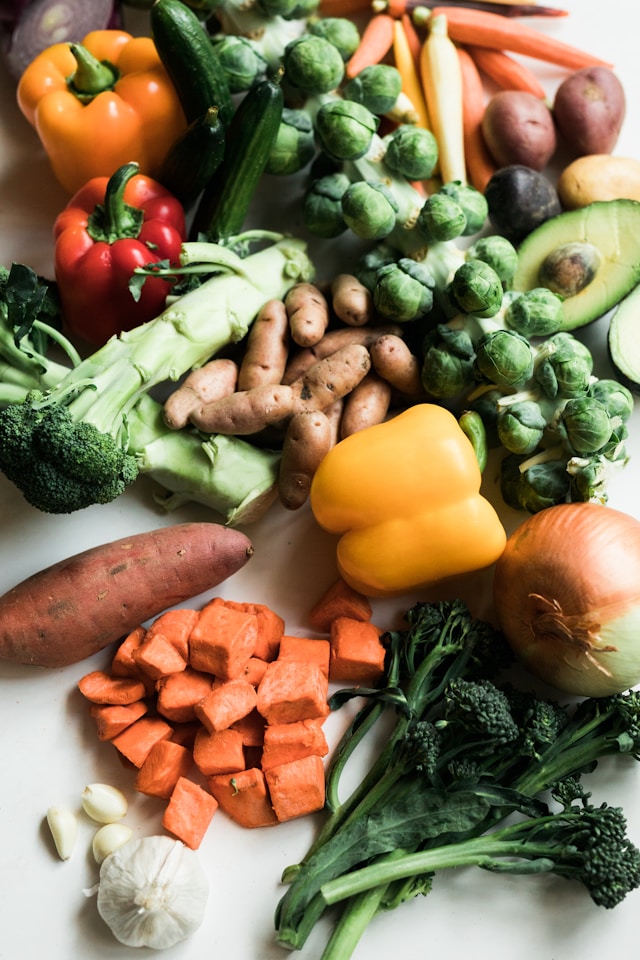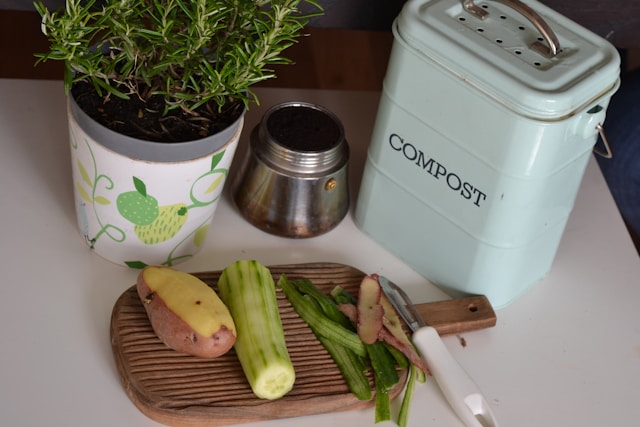As you explore the culinary landscape, you will observe that cooking practices always change. Factors such as technology, health trends, and cultural exchanges continually reshape how we cook and eat.
Whether you’re experienced or new to cooking, staying updated on these changes can inspire your cooking and elevate your meals. This blog post aims to explore a few vital trends that are shaping global cooking habits.
Embracing Plant-Based Diets
Plant-based diets are becoming more popular globally, attributed to health, ethical, and environmental considerations. This trend is evident in the increased availability of plant-based options in grocery stores and restaurants. Many individuals are cutting back on meat and exploring vegetarian or vegan diets. These shifts underscore a growing recognition of the advantages of plant-based eating.
Businesses are catering to this trend with innovative plant-based products. You can find plant-based milk, cheese, and even meat substitutes. This growing market reflects rising consumer interest in healthier and more sustainable food choices.

Recent surveys have revealed a growing awareness of the health benefits of a plant-based diet. Despite this higher recognition, only about 25% of Americans are ready to adopt such a diet, according to a study in MDPI. Moreover, the younger generation, such as Gen Z and Millennials, show a higher inclination toward plant-based eating despite also reported increased red meat consumption.
These findings highlight the complex shifts in dietary preferences and health perceptions about embracing plant-based diets.
Utilizing Smart Kitchen Appliances
Smart kitchen appliances are transforming how people cook at home. Devices like smart ovens, fridges, and cookers simplify meal preparation. These gadgets provide accurate cooking controls and connectivity to your smartphone.
People rely on smart appliances to streamline cooking processes and maintain consistent results. These devices are equipped with monitoring and controlling features, improving your convenience. Many smart kitchen appliances have pre-programmed recipes to further facilitate kitchen tasks.
However, consumers should be cautious when using smart pressure cookers. These devices can explode if not used correctly, causing injuries. According to TorHoerman Law, a pressure cooker relies on a steam release valve to maintain and regulate pressure during cooking.
If debris blocks this valve or there are issues with the venting system, pressure cannot be properly released or controlled. This buildup of steam can lead to a violent explosion when the cooker’s lid is opened, posing significant safety risks.
In recent years, many individuals have suffered severe injuries due to the pressure cooker explosion. These injuries often cause life-long disability, putting massive financial and emotional challenges. To address them, victims can explore legal solutions and file a pressure cooker explosion lawsuit to seek compensation for their losses.
Exploring Ethnic and Fusion Cuisines
A growing number of individuals are now exploring ethnic and fusion cuisines at home. They experiment with ingredients and cooking techniques from different cultures. This trend broadens culinary boundaries and introduces a variety of new flavors to cooking practices.
Many home cooks combine elements from different cuisines to craft unique dishes. Combining spices, herbs, and cooking styles leads to innovative meals. This trend mirrors the rising diversity in culinary tastes and preferences.

Global ingredients are now more accessible than ever, with international markets and online stores offering a diverse array of products. This accessibility prompts more individuals to explore and appreciate ethnic and fusion recipes.
Exploring new blends is particularly important when a large number of consumers are facing food safety risks. New research by the Food Standards Agency reveals that increasing prices are motivating some people to take more food safety risks to save money.
The research showed that nearly 20% of respondents are practicing riskier food safety behaviors. This includes keeping leftovers longer and consuming food past its use-by date. Compared to past surveys, these behaviors are more evident, showcasing a drastic shift in consumer food safety practices influenced by economic pressures.
Adopting Sustainable Cooking Practices
A growing number of individuals are embracing sustainable cooking practices to bring down their environmental footprint. They opt for local and seasonal ingredients to reduce carbon emissions. Using less meat and more plant-based foods also helps.
Minimizing food waste is another vital aspect of sustainable cooking. People plan meals carefully and use leftovers creatively. Composting food scraps is becoming more common in households.

A recent survey from the International Food Information Council (IFIC) shows a rising consumer preference for transparent practices in the food industry.
This preference is focused on eco-friendly practices aimed at building sustainable food systems.
According to the survey, 56% of consumers prioritize local food availability, and 52% consider the presence of bioengineered ingredients when making purchasing decisions. Moreover, 51% prioritize animal welfare when deciding what products to buy. These considerations align with the trend toward sustainable cooking practices, reflecting a broader commitment to ethical food choices.
Prioritizing Home-Cooked Meals
A rising number of individuals are opting for home-cooked meals instead of dining out. This shift is attributed to health and cost considerations.
Home-cooked meals often incorporate fresher ingredients and fewer processed foods. People enjoy experimenting with recipes and improving their cooking skills. This trend also promotes family bonding during the cooking process.
According to the National Frozen & Refrigerated Foods Association, 81% of consumers now prepare more than half of their meals at home. Despite a slight decline during the COVID-19 pandemic, 64% of Americans continue to cook at home to save money and control their budget. These findings showcase a continued prioritization of home-cooked meals.
Incorporating Health-Conscious Ingredients
Global cooking trends globally are moving towards using health-conscious ingredients. Many people are choosing ingredients known for their nutritional advantages. These include whole grains, lean proteins, and fresh produce. This trend indicates a wider recognition of health concerns linked to diet.
According to the IFIC Food & Health Survey, consumers have different definitions of healthy food. For the third consecutive year, 39% of consumers identify freshness as the top criterion for defining healthy food. It is followed by 37% of consumers who select “good source of protein” and 35% preferring “low in sugar”. These preferences align with the trend of incorporating health-conscious ingredients in cooking.
Frequently Asked Questions
What is the Biggest Food Trend in 2024?
The biggest food trend in 2024 is the widespread adoption of plant-based diets. Many people are choosing to incorporate more plant-based foods into their meals due to health and environmental concerns. This trend is influencing restaurant menus and grocery store offerings globally.
What Causes Changing Trends in Food Habits?
Changing trends in food habits are primarily driven by shifts in health awareness. As people become more informed about nutrition, they adjust their diets accordingly. Economic factors also play a role in influencing the affordability and availability of certain foods. Cultural influences and media exposure further shape food preferences and habits globally.

What Is Third Culture Cuisine?
Third culture cuisine refers to a blend of culinary traditions from different cultures. It emerges when people of diverse backgrounds fuse ingredients and cooking techniques. This fusion creates unique dishes that reflect cultural diversity and global influences. Third culture cuisine celebrates culinary creativity and cultural exchange in contemporary food trends.
In conclusion, the evolution of global cooking behaviors highlights several key trends shaping culinary practices today. From embracing plant-based diets to prioritizing home-cooked meals, these shifts reflect changing preferences toward healthier and more sustainable cooking methods.
As technology and cultural influences continue to intertwine, staying informed about these trends enhances culinary experiences and supports environmental sustainability on a global scale.









